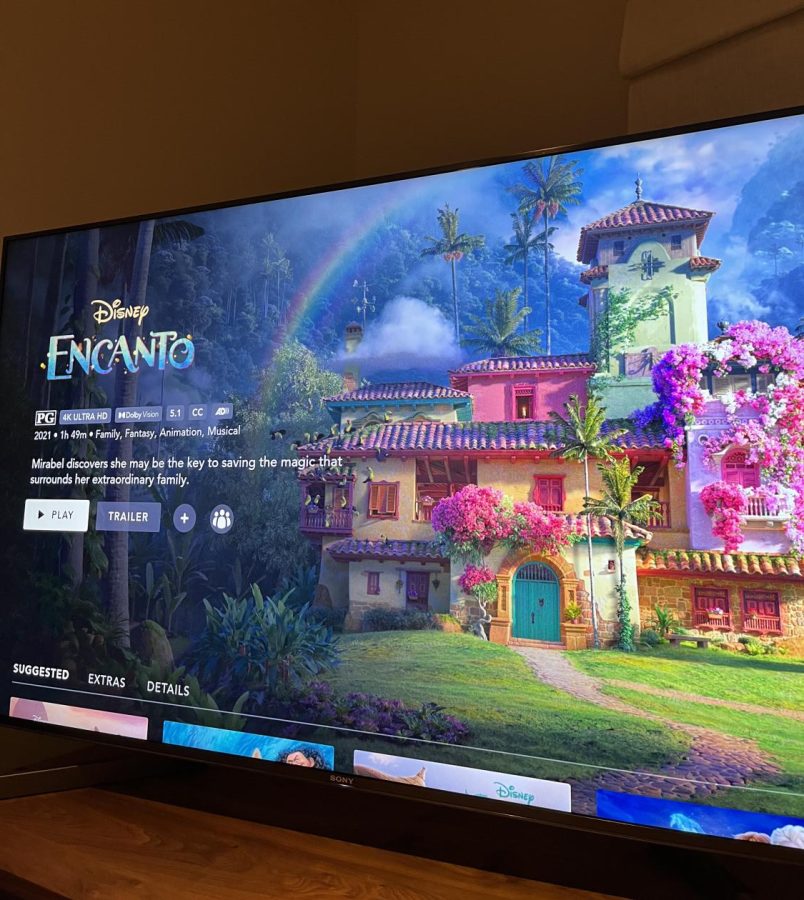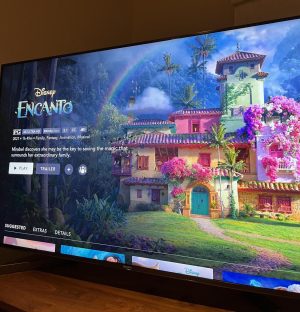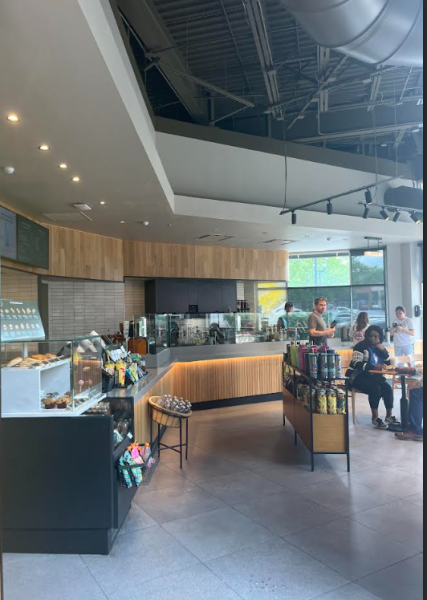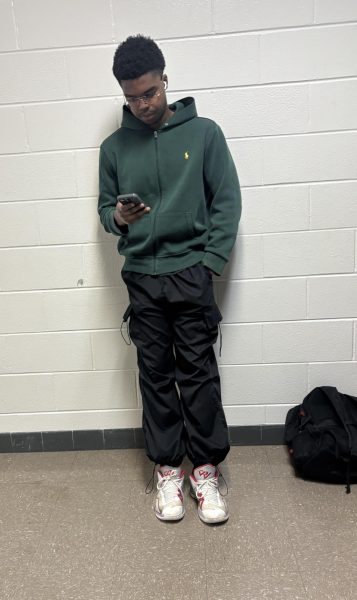Encanto’s diversity gives Latinxs the chance to see themselves, their culture represented on big screen
Encanto can be viewed for free on Disney’s streaming service, Disney +.
Disney’s Encanto is a family musical comedy set in Colombia, South America, and released in theaters Nov. 24, 2021. Despite nearing the end of January, the hype around Encanto is yet to dissipate, and for good reason. The representation in this movie has reached and impacted Latinxs everywhere especially, Latinx kids and teens.
It’s been over a month since Encanto came to Disney+ on Dec. 24, 2021. In that time it has gained immense popularity with its song, “We Don’t Talk About Bruno,” hitting number two on Billboard’s Hot 100, surpassing Frozen’s Oscar-winning song “Let it Go,” which peaked at number five. The movie follows the Madrigals, a magical family who live in a charmed house within a village named “the Encanto” hidden in the mountains of Colombia. Every child in the family is blessed with a unique gift on their fifth birthday except for Mirabel (voiced by Argentine-American actress Stephanie Beatriz).
Along with their diverse set of gifts, the Madrigals are a family diverse in skin tones, features, and hair types, which illustrates the diversity amongst Latinxs. Mirabel’s side of the family is the more “common” tanned/brown tone with hair ranging from straight to curly. Then there’s tia Pepa (voiced by Colombian actress Carolina Gaitán) who is white with auburn curls, and her husband and kids who are Afro-Latino. The movie’s cast also features familiar names from Latin media. “I really appreciated that they had a Hispanic character who was white. I often feel like people don’t believe that I’m Mexican because people only really think of Hispanics as brown,” Senior Eric Arvizu said.
Encanto took its representation further than just its characters’ appearances, representing Colombian culture in a multitude of ways. Julieta, Mirabel’s mother (voiced by Colombian actress Angie Cepeda) uses food to heal people; in her cooking, we see many traditional Colombian foods like arepas, empanadas, buñuelos, and patacones. The characters are also pictured wearing different styles of Colombian clothing like Felix (voiced by Mauro Castillo) who wears an amber Guayabera, Bruno (voiced by John Leguizamo) and Camilo (voiced by Rhenzy Feliz) who both wear traditional ruanas, and Isabella (voiced by Diane Guerrero) who wears a flamboyant lilac Cumbia dress.
The movie’s deeper themes of intergenerational trauma and how it affects families resonate hardest with Latinxs. This trauma originated from when Abuela Alma (voiced by María Cecilia Botero) was forced to flee her home with her newborn triplets and the rest of the community as a result of invaders. While fleeing, Alma’s husband died protecting the community and from this tragedy rose the Encanto.
As her children grew, they were granted gifts and thus it became the Madrigal’s purpose to use their powers for the well-being of their people. In trying to protect her family and community and due to her trauma, Alma places suffocating expectations and always pushes members of the family to do what she believes they’re supposed to do. “I feel like Encanto got the pressure that we feel spot on. In Hispanic families, there are often crazy high expectations that feel like we’re carrying the entire future of our family on our shoulders,” senior Samir Mitri said.
From the diversity of its character’s appearances, to the Columbian food and clothing to the depiction of intergenerational trauma, Encanto’s wide range of Latinx representation sets a new standard for Latinx representation in media to come.
Your donation will support the student journalists of Thomas S. Wootton High School. Your contribution will allow us to purchase equipment and cover our annual website hosting costs.










